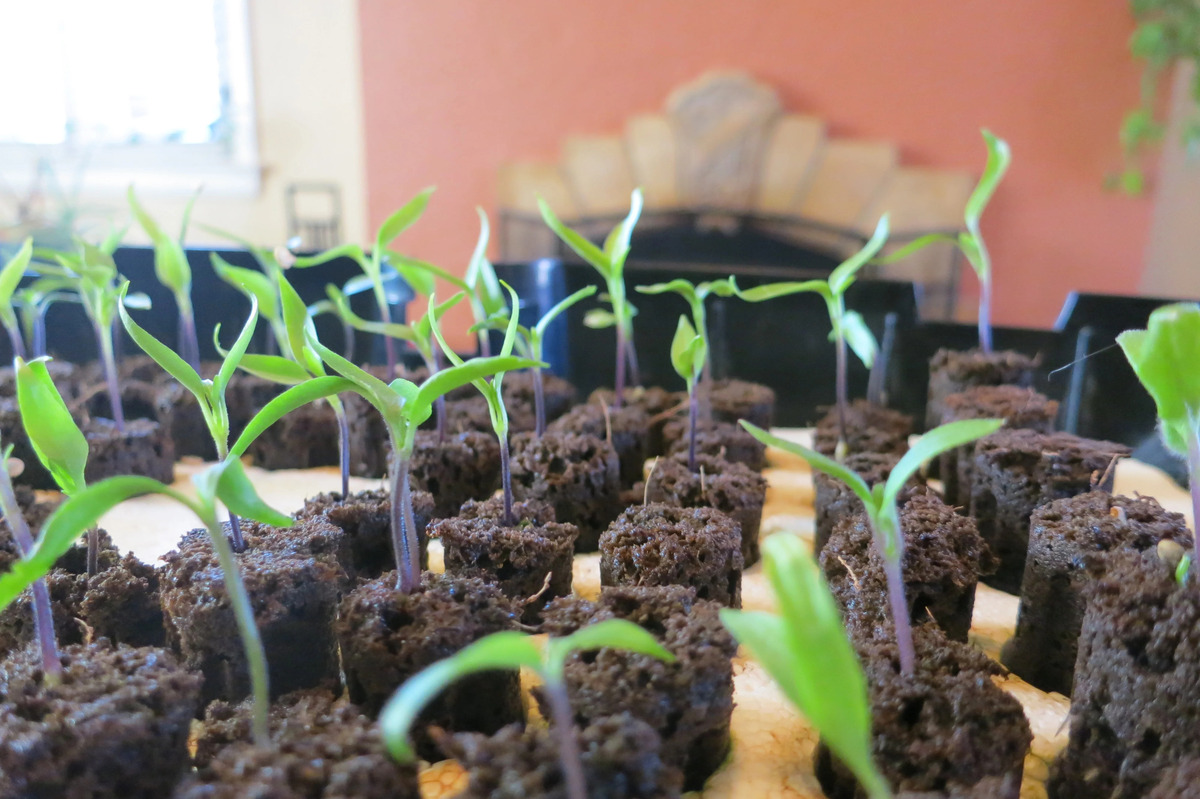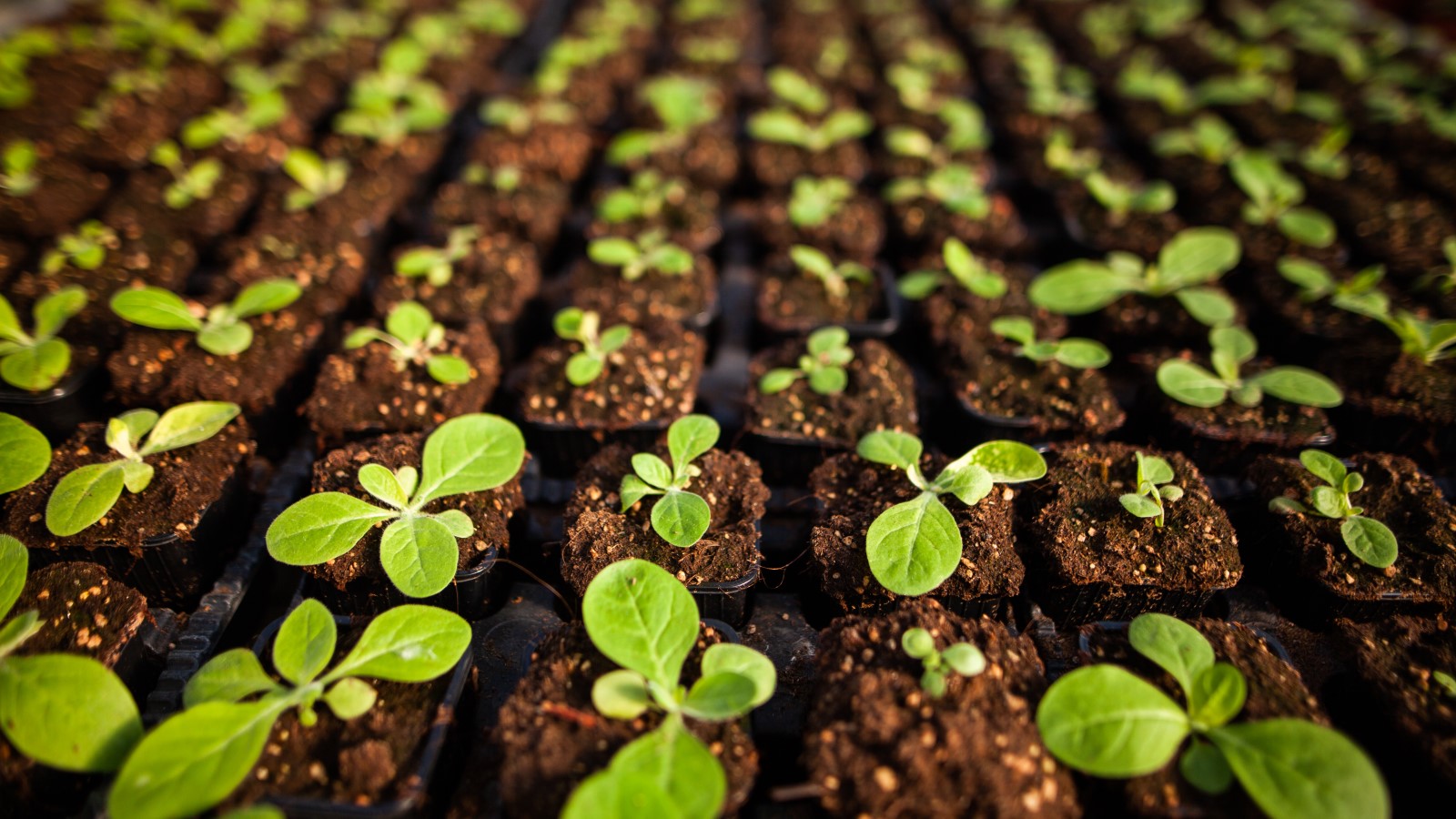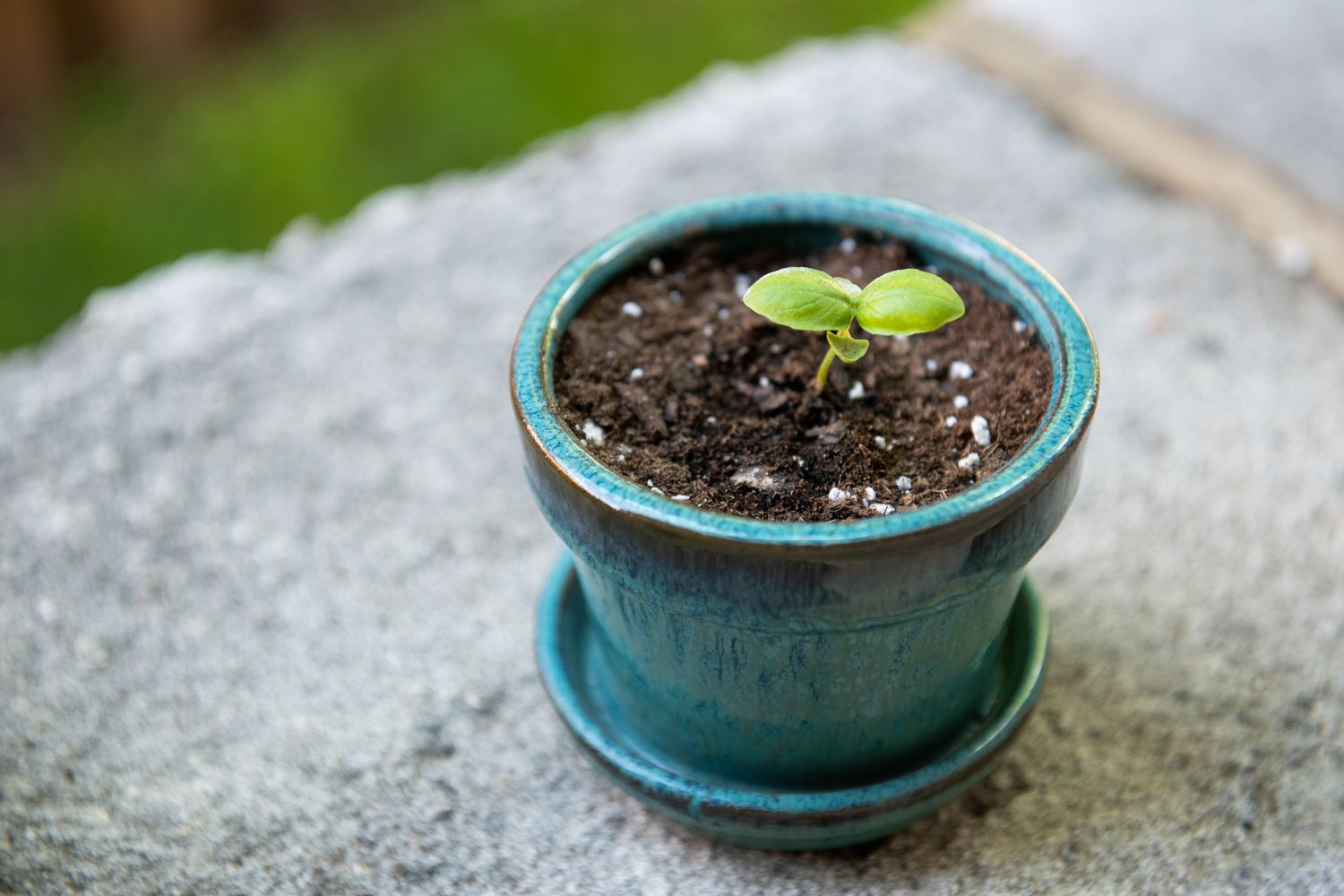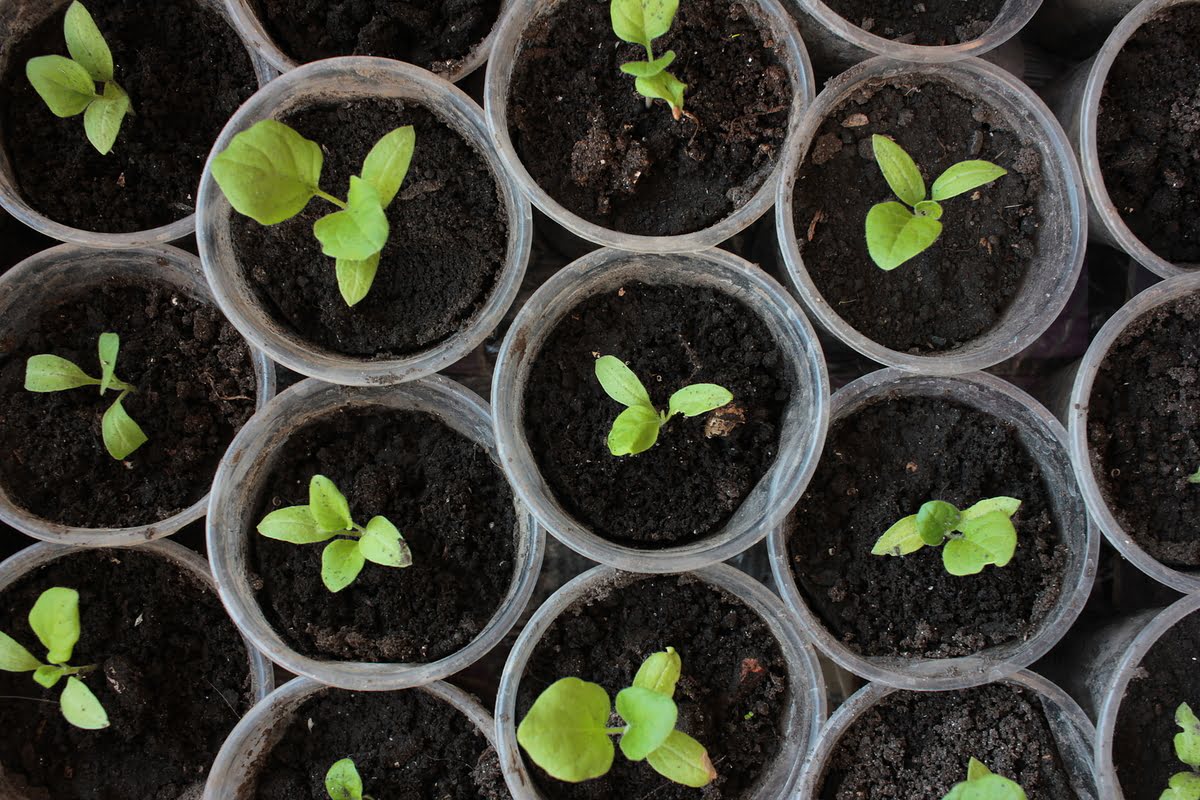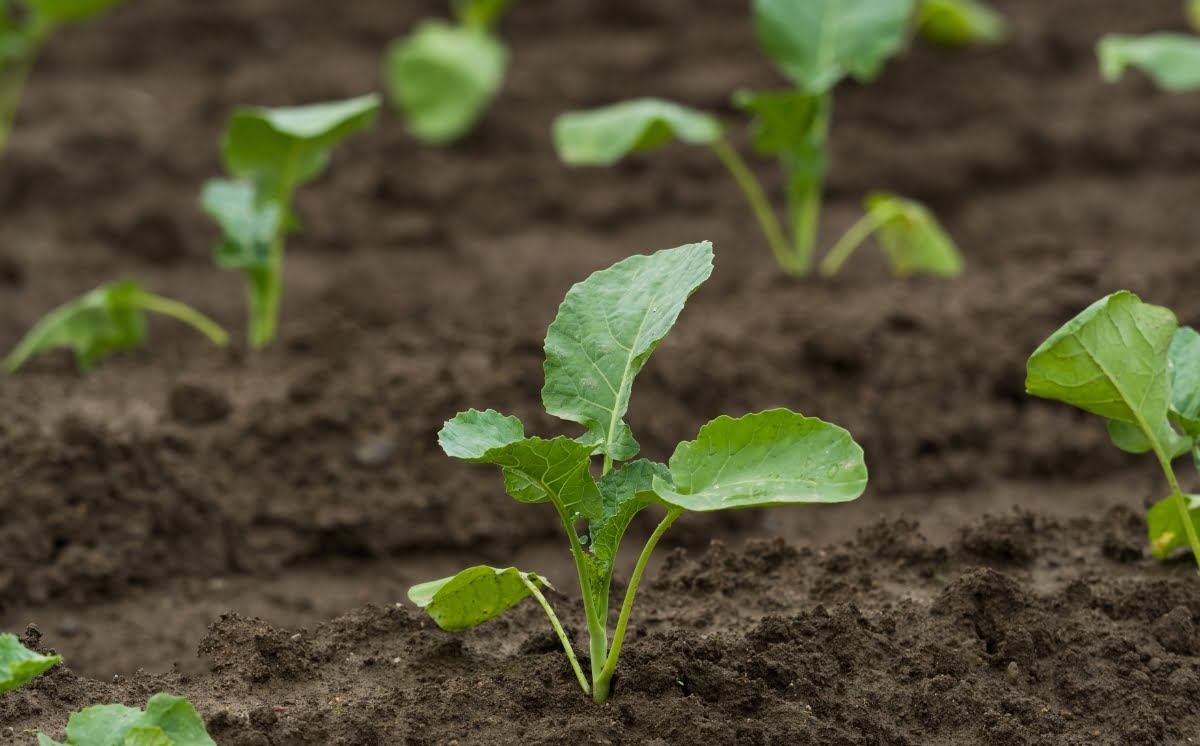Home>Types of Gardening>Edible Gardening>When To Thin Arugula Seedlings


Edible Gardening
When To Thin Arugula Seedlings
Published: January 2, 2024
Discover when to thin arugula seedlings for optimal growth and harvest in your edible gardening journey. Expert advice and tips to get the most out of your arugula plants.
(Many of the links in this article redirect to a specific reviewed product. Your purchase of these products through affiliate links helps to generate commission for Chicagolandgardening.com, at no extra cost. Learn more)
Table of Contents
Introduction
Welcome to the wonderful world of edible gardening! There is something incredibly rewarding about growing your own food, and one of the most popular and versatile crops to begin with is arugula. With its peppery flavor and vibrant green leaves, arugula adds a delightful touch to salads, sandwiches, and even pizza toppings. However, successfully growing arugula starts with understanding the importance of thinning seedlings.
Thinning seedlings refers to the process of removing excess plants to allow the remaining ones to have enough space to grow and thrive. While it may seem counterintuitive to remove seedlings that you’ve been nurturing, thinning is a crucial step in promoting the health and productivity of your arugula crop.
In this article, we will delve into the world of arugula seedlings and explore when and how to thin them for optimal results. By understanding the signs that indicate the need for thinning and the best practices to follow, you will be well-equipped to embark on your edible gardening journey with confidence.
Whether you are a seasoned green thumb or a newbie to the world of gardening, this article will provide you with the knowledge and insights you need to successfully thin your arugula seedlings and maximize their potential.
Understanding Arugula Seedlings
Before we dive into the process of thinning arugula seedlings, it’s important to have a solid understanding of what these seedlings are and how they develop. Arugula, also known as rocket or salad rocket, is a leafy green vegetable that belongs to the brassica family. It is known for its rapid growth and ability to thrive in cool weather.
Arugula seedlings typically emerge within 7-10 days after sowing the seeds. At this stage, they have delicate, feathery cotyledons, or seed leaves, which eventually give way to the first set of true leaves. These true leaves are darker in color and have the characteristic peppery taste that arugula is known for.
As the seedlings continue to grow, they will produce additional sets of true leaves, becoming more robust and establishing a strong root system. However, if left unattended, the dense growth can lead to overcrowding, which can impede the growth and development of the individual plants.
It’s important to note that arugula is a cool-season crop, meaning it thrives in temperatures between 45°F (7°C) and 65°F (18°C). Excessive heat can cause the arugula plants to bolt, or prematurely flower and set seed, which can negatively impact the flavor and quality of the leaves. Therefore, it’s essential to time the thinning process appropriately to ensure optimal growth before the onset of hot weather.
By understanding the growth stages of arugula seedlings and the conditions they thrive in, you can make informed decisions about when and how to thin them, setting the stage for a successful harvest.
Signs that Seedlings Need Thinning
Knowing when to thin your arugula seedlings is vital to ensure their healthy development. Here are some signs to look out for that indicate it’s time to thin your arugula seedlings:
- Crowding: If your arugula seedlings are growing too close together, their leaves may be overlapping, and they may compete for resources such as sunlight, water, and nutrients. This overcrowding can lead to stunted growth and make it more challenging for the plants to access these vital resources.
- Yellowing or wilting leaves: If you notice that some of the arugula seedlings have yellowing or wilting leaves, it could be a sign that they are not receiving enough nutrients or are being overshadowed by neighboring plants. Thinning can help alleviate these issues and improve overall plant health.
- Uneven growth: Some seedlings may be growing faster and stronger than others, causing an imbalance in the overall development of your arugula plot. Thin out the stronger seedlings to allow the weaker ones a better chance to catch up.
- Lack of air circulation: Poor air circulation within the arugula patch can create a conducive environment for diseases to develop. Thinning out excess seedlings can improve air circulation and reduce the likelihood of fungal or bacterial infections.
- Struggling or deformed seedlings: If you notice any seedlings that appear weak, struggling, or deformed, it’s best to remove them to prevent them from negatively impacting the health of the remaining seedlings.
By keeping an eye out for these signs, you can identify when your arugula seedlings need thinning, ensuring that they have the space and resources they need to thrive.
Optimal Time for Thinning Arugula Seedlings
Choosing the right time to thin your arugula seedlings is crucial for their overall success and productivity. It’s important to strike a balance between allowing the seedlings to establish a strong root system and giving them enough space to grow and access essential resources. Here are some guidelines to help you determine the optimal time for thinning your arugula seedlings:
First True Leaf Stage: Arugula seedlings typically develop their first set of true leaves within 2-3 weeks after germination. These true leaves are larger and more distinct than the initial cotyledon leaves. At this stage, you can start evaluating the spacing and density of the seedlings to determine if thinning is necessary.
Spacing Guidelines: Arugula seedlings should ideally be spaced 3-6 inches apart to allow for adequate airflow and ensure that each plant has sufficient room for root and leaf development. If the seedlings are closer together than this, thinning is needed.
Consider Growth Rate: Take into account the growth rate of your arugula seedlings. If you notice that some plants are growing significantly faster and larger than others, it’s a good indication that thinning is necessary to maintain uniform growth amongst the remaining seedlings.
Time Before Hot Weather: It’s essential to thin your arugula seedlings before hot weather arrives, as excessive heat can cause the plants to bolt and become bitter. Aim to thin them at least 2-3 weeks before the average last frost date in your area. This timing allows the remaining seedlings to establish a robust root system and grow large enough to withstand the heat.
Gradual Thinning: Instead of thinning all the seedlings at once, consider gradually thinning them over a period of a few weeks. This approach ensures a smoother transition for the remaining plants and reduces the risk of transplant shock.
By following these guidelines and observing the growth stage and spacing of your arugula seedlings, you can determine the optimal time to thin them, setting the stage for healthy, productive plants.
How to Thin Arugula Seedlings
Thinning arugula seedlings is a relatively simple process that involves removing excess plants to create adequate spacing for optimal growth. Here is a step-by-step guide on how to thin your arugula seedlings:
- Choose the right time: Select the optimal time to thin your arugula seedlings, as discussed in the previous section. This ensures that the remaining seedlings have enough time to establish themselves before the onset of hot weather.
- Prepare the soil: Before thinning, water the arugula seedlings lightly to make the soil slightly damp. This helps ease the removal of seedlings without disturbing the roots of the remaining plants.
- Identify the weakest seedlings: Assess the overall growth and health of the seedlings. Identify the weaker or slower-growing plants that may require thinning to allow room for the stronger ones to thrive.
- Gently remove the seedlings: Using your fingers, carefully pull out the selected seedlings from the soil, near the base of the plant. Take caution not to disturb the roots of the remaining seedlings as you remove the unwanted ones. Alternatively, you can snip the unwanted seedlings at soil level using clean scissors or garden shears.
- Space the remaining seedlings: After thinning, ensure that the remaining arugula seedlings are spaced appropriately, generally around 3-6 inches apart. This spacing allows for optimum airflow and prevents overcrowding.
- Water the seedlings: Once you have completed the thinning process, gently water the remaining seedlings to help them recover and settle into their new spacing. Be careful not to overwater, as excessive moisture can lead to fungal disease development.
- Monitor and care for the seedlings: Keep a close eye on the remaining seedlings and provide them with proper care, including regular watering, adequate sunlight, and timely fertilization. This will help ensure their healthy growth and development.
By following these steps, you can effectively thin your arugula seedlings, creating the ideal conditions for them to thrive and produce a bountiful harvest.
Factors to Consider When Thinning Arugula Seedlings
Thinning arugula seedlings involves more than just removing excess plants. There are several factors to consider to ensure a successful thinning process and promote the healthy growth of your arugula crop. Here are some key factors to keep in mind:
- Spacing: Adequate spacing is crucial for arugula seedlings to develop healthy root systems and receive optimal sunlight and nutrients. Consider the recommended spacing guidelines of 3-6 inches between plants, and adjust accordingly during the thinning process.
- Timing: Timing is everything when it comes to thinning arugula seedlings. Thinning too early can disrupt the growth of the remaining seedlings, while thinning too late can lead to stunted growth and overcrowding. Follow the recommended guidelines discussed earlier to determine the best time to thin your arugula seedlings.
- Consistency: Consistent spacing among the remaining seedlings is crucial for their healthy development. Pay attention to the spacing as you remove excess seedlings, ensuring that the remaining plants are evenly distributed and have enough room to grow.
- Strength and vitality: When thinning, prioritize removing weaker or stunted seedlings, as they are less likely to thrive and contribute to the overall productivity of the crop. By removing these weaker plants, you allow the stronger ones to flourish and utilize available resources effectively.
- Thinning increments: Instead of thinning all at once, consider thinning in stages. Gradual thinning allows the remaining seedlings to adjust to the new spacing and reduces transplant shock. It also gives you the opportunity to assess the growth and health of the seedlings at each stage of thinning.
- Overall plant density: While it is essential to thin arugula seedlings to reduce overcrowding, it’s also important not to thin excessively, as this can leave gaps in your arugula patch. Aim for a balance between adequate spacing and maintaining a desirable plant density for a healthy and visually appealing crop.
- Observation: Keep a close eye on the development of the remaining seedlings after thinning. Monitor their growth, leaf color, and overall health to identify any signs of stress or nutrient deficiencies. This allows you to make any necessary adjustments to their care and ensure their continued vitality.
Considering these factors while thinning your arugula seedlings will help you create the ideal conditions for the remaining plants to flourish and produce a delicious and abundant harvest.
Common Mistakes to Avoid When Thinning Arugula Seedlings
Thinning arugula seedlings is a delicate process that requires care and attention to ensure the health and productivity of your crop. However, there are common mistakes that gardeners often make when thinning arugula seedlings. By being aware of these mistakes, you can avoid them and set yourself up for success. Here are some common mistakes to avoid:
- Thinning too late: Delaying the thinning process can lead to overcrowding and stunted growth. Thinning should be done at the appropriate time to allow the remaining seedlings enough space and resources for healthy development.
- Thinning too much: Overzealous thinning can result in an overly sparse crop and can leave gaps in your arugula patch. It’s important to strike a balance between thinning sufficiently for proper spacing and maintaining a desirable plant density.
- Poor spacing: Inconsistent or improper spacing can hinder the growth and development of your arugula seedlings. Be mindful of the recommended spacing guidelines and ensure that the remaining seedlings are evenly distributed for optimal airflow and nutrient uptake.
- Damage to remaining seedlings: During the thinning process, it’s crucial to handle the remaining seedlings with care to avoid damaging their delicate roots. Rough handling or accidental root disturbance can impede their growth and lead to transplant shock.
- Not observing the weakest seedlings: It’s essential to identify and remove the weaker or slower-growing seedlings during the thinning process. Failing to do so can result in limited resources being shared among the plants, impacting the overall health and productivity of the crop.
- Overwatering after thinning: While watering is important for the recovery of the remaining seedlings after thinning, overwatering can lead to issues such as root rot and fungal disease. Maintain proper watering practices and avoid excessive moisture in the soil.
- Ignoring proper care after thinning: Thin arugula seedlings require ongoing care and maintenance after thinning. Neglecting their water, sunlight, and nutrient needs can hinder their growth and compromise their health.
By avoiding these common mistakes, you can ensure a successful thinning process and set the stage for healthy, productive arugula plants.
Conclusion
Thinning arugula seedlings is an essential step in the cultivation of a thriving and productive arugula crop. By understanding the signs that indicate the need for thinning, choosing the optimal time, and following the proper techniques, you can create the ideal conditions for your arugula seedlings to flourish.
Knowing when to thin, spacing the remaining seedlings appropriately, and considering factors such as plant strength and consistent growth are key aspects to keep in mind. Avoiding common mistakes, such as thinning too late or too much, damaging the remaining seedlings, and neglecting proper care after thinning, will help ensure the success of your arugula crop.
By thinning your arugula seedlings, you allow the remaining plants to access essential resources, including sunlight, water, and nutrients. This promotes healthy growth, prevents overcrowding, and reduces the risk of disease and nutrient deficiencies.
Remember, thinning is not only important for the individual plants but also for the overall aesthetics and productivity of your arugula patch. A well-spaced and properly thinned arugula crop will not only be visually appealing but will also produce abundant and flavorful harvests.
Now that you have a comprehensive understanding of when and how to thin your arugula seedlings, you can embark on your edible gardening journey with confidence. Happy gardening and enjoy the flavorful bounty of your homegrown arugula!


